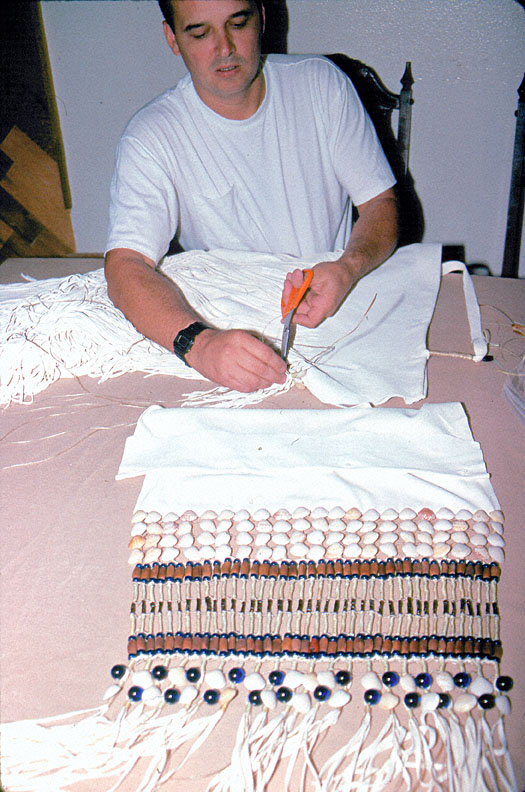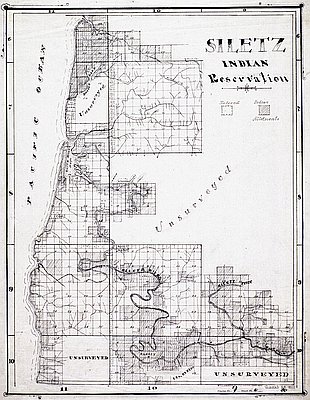- Catalog No. —
- S 2-484
- Date —
- 1992
- Era —
- 1981-Present (Recent Oregon History)
- Themes —
- Arts, Folklife, Native Americans
- Credits —
- Oregon Folklife Program
- Regions —
- Coast
- Author —
- Nancy J. Nusz
Tututni Shell Dress
This photograph of Alfred “Bud” Lane III busy at work cutting fringes from deer hide during the construction of a Tututni shell dress was taken by Nancy Nusz in 1992. At the time, Lane was teaching Mitzi Shoemake how to make the traditional coastal Indian shell dress through the Traditional Arts Apprenticeship Program of the Oregon Historical Society Folklife Program.
Alfred “Bud” Lane III was born in Agama, Guam in 1957. As a young man, he returned to his family’s home in Siletz, Oregon because he longed to learn the traditions of his forebears. When he was twenty-four years old, he began a quest to revitalize a dance among his people known as the Nay Dosh—the Feather Dance. To do so required that he master not only the dance and songs, but also be able to provide dancers with the proper regalia and place to house the ceremony. For ten years, Lane studied under three Tututni elders (Loren Bommelyn, Nellie Orton, and Gladys Bolton) to acquire the proper knowledge and develop his skills—which he did successfully. Working with other tribal members, Lane also spearheaded the construction of a cedar plank dance house along the Siletz River. In 1996, largely because of Lane’s determination, the Nay Dosh was danced for the first time in seventy-five years.
Tututni shell dresses are worn for ceremonial Feather Dances. These dresses incorporate prestigious symbols of the central coastal peoples including shells, pine nuts, bear grass and beads. Although the design of the dress varies according to the individual’s preference, they all have the same basic construction: the base for the dress is made of elk skin and decorated with the previously mentioned materials. Two other hides (deer) are then cut for fringe and for the belt. Shells are strung along the buckskin fringes and then tied or wrapped at the base with more bear grass. Finally, abalone pendants are tied at the bottom. Lane says, “The pendants are added not only to beautify the dress, they are also added for the sounds they create while performing the dance.” Tututni shell dresses were made to last for generations and were passed down through dance families.
Written by Joshua Binus, © Oregon Historical Society, 2005.

